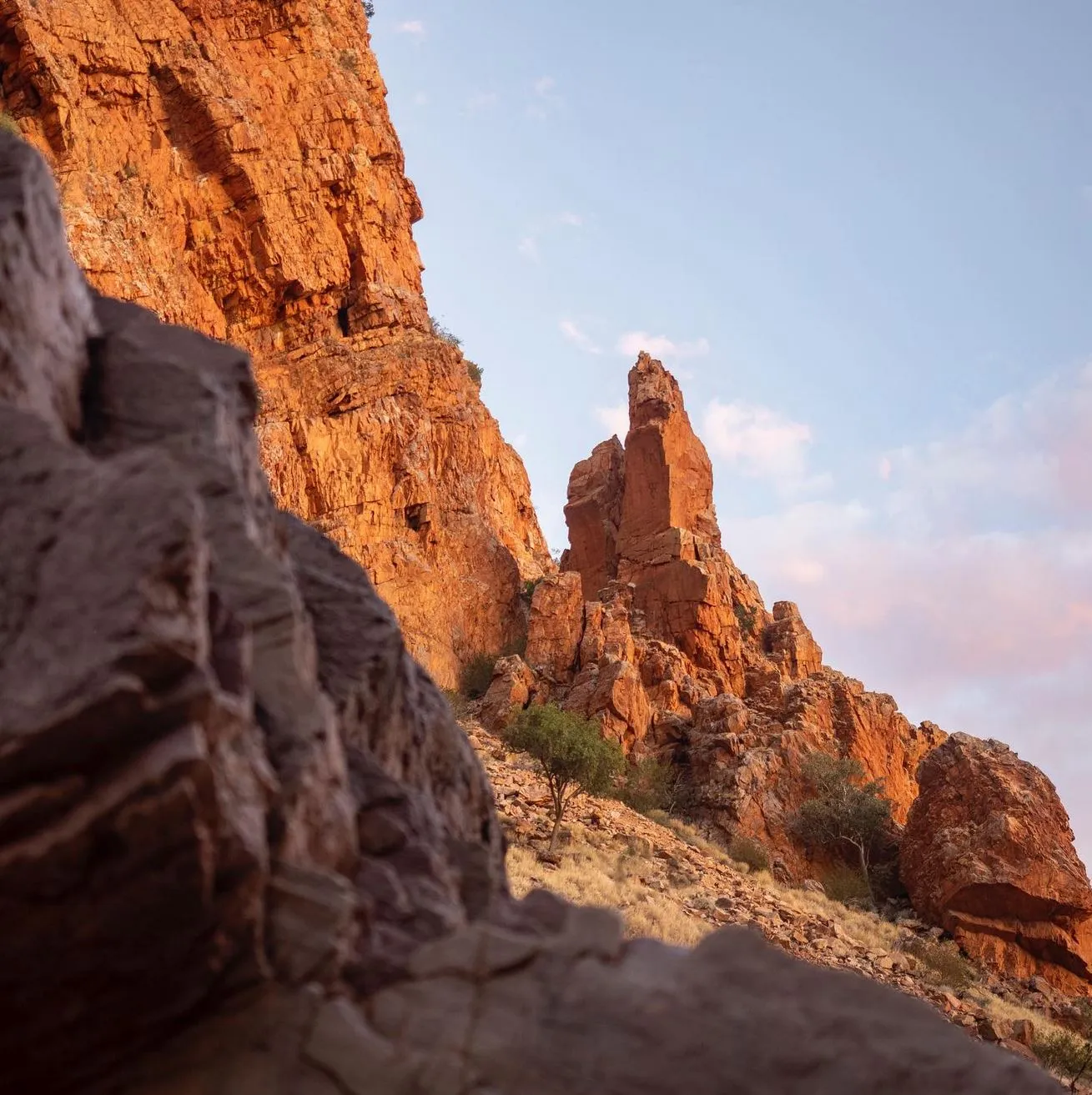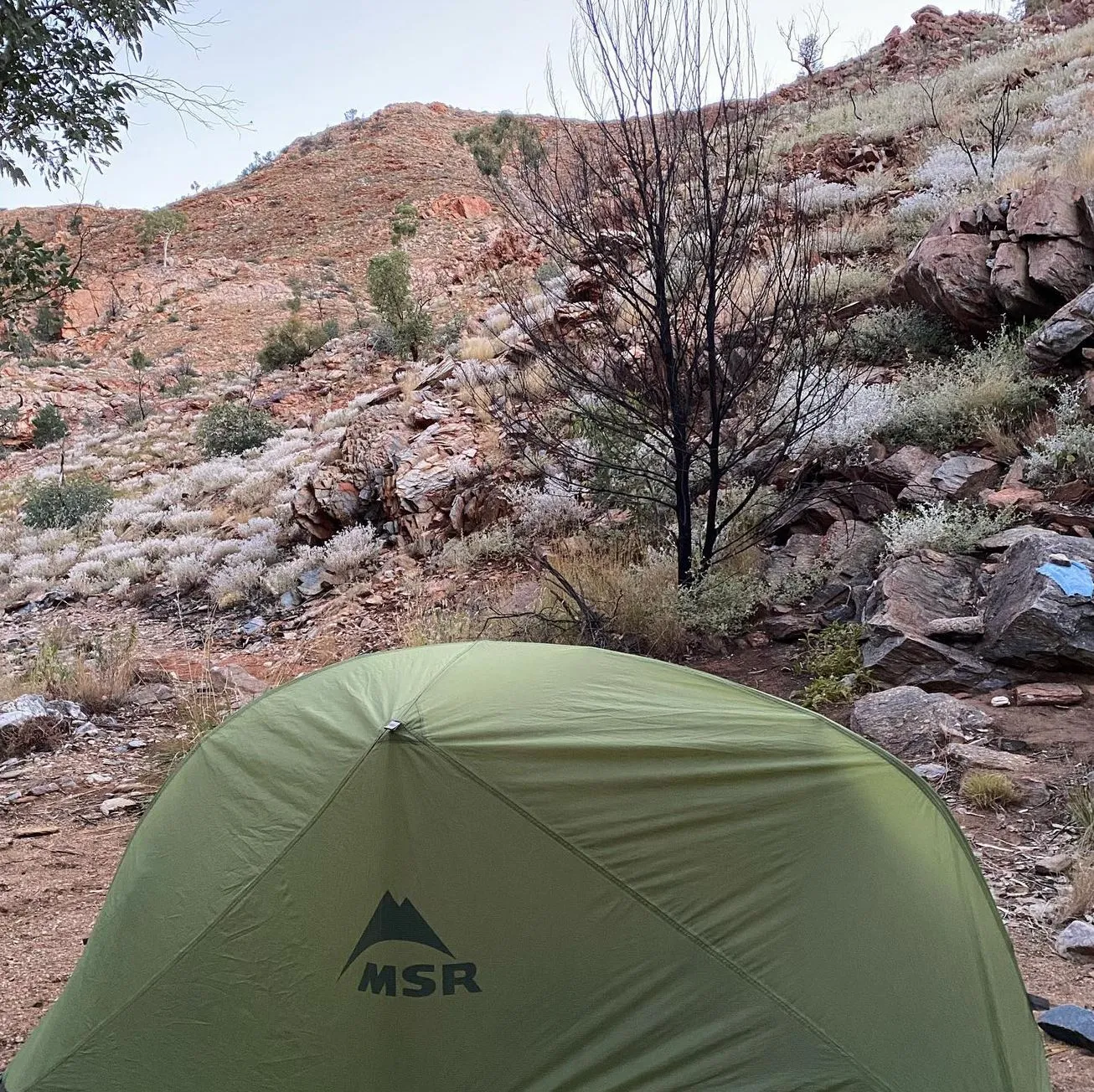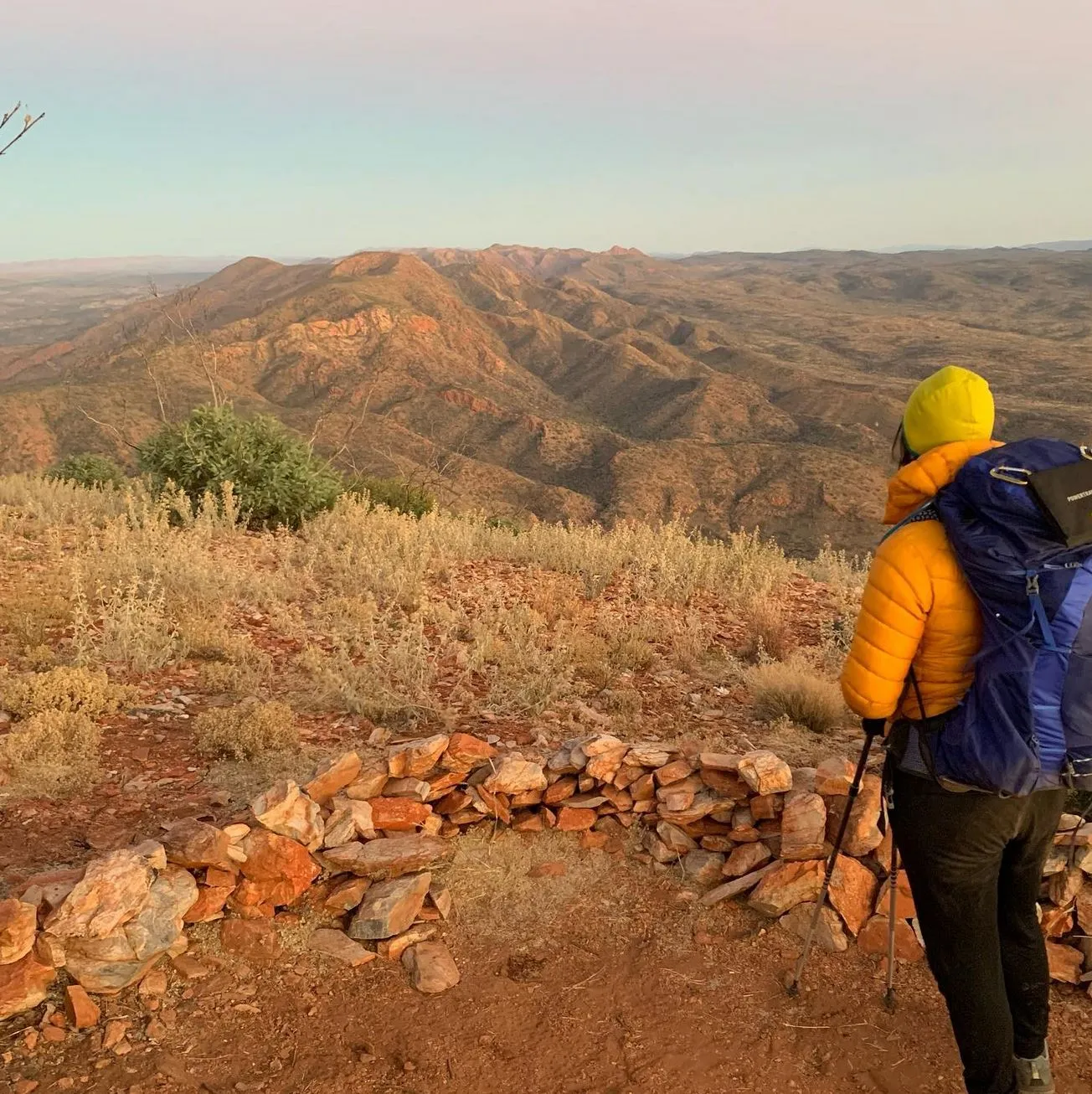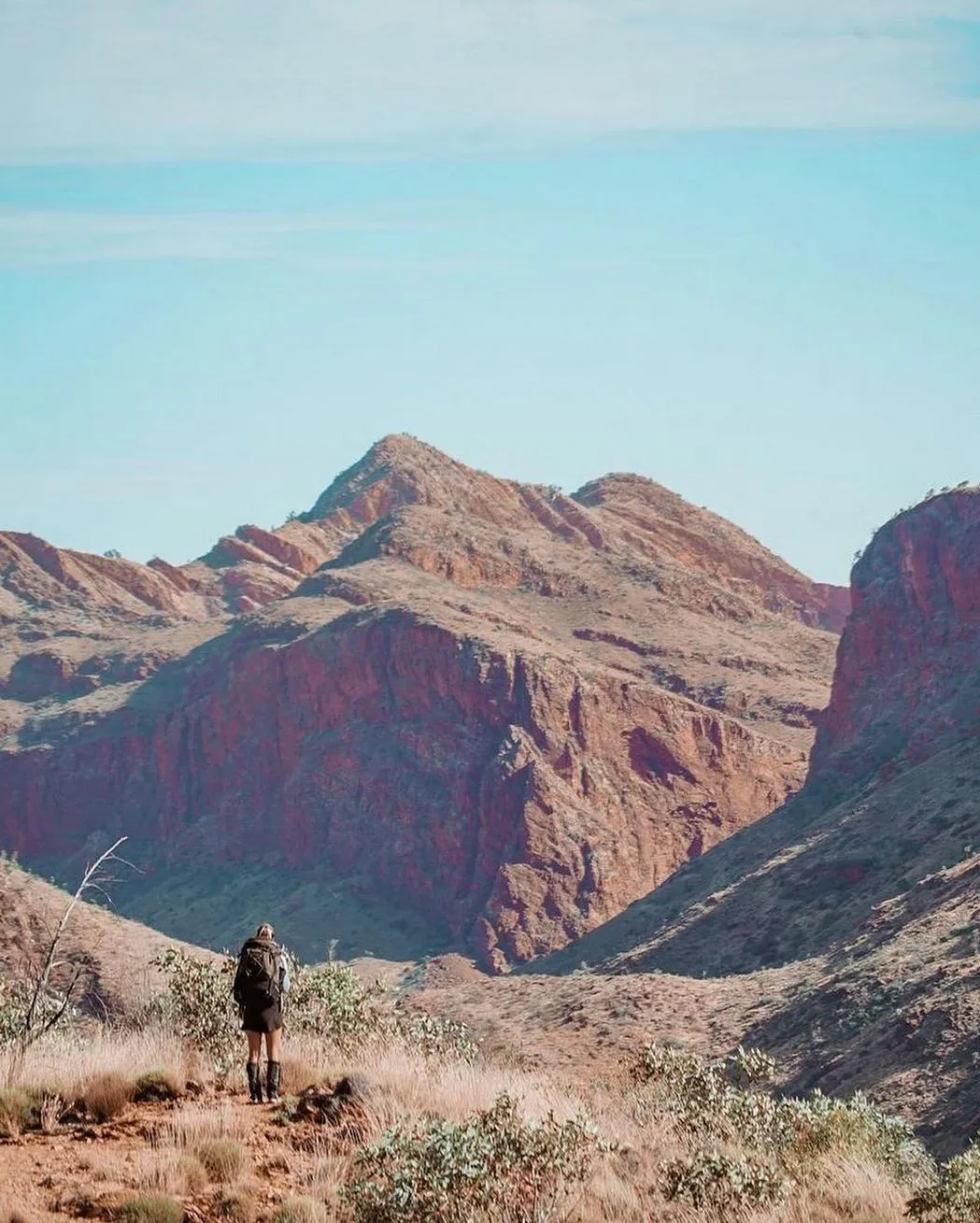The Larapinta Trail is one of Australia’s most famous long-distance hikes, 223 km through the West MacDonnell Ranges in the Northern Territory. For those tackling this incredible journey, knowing where to camp along the way is crucial for a safe and enjoyable experience. In this guide, we’ll look at the best campgrounds on the Larapinta Trail, their facilities and what to expect.
Types of Campgrounds
The trail has a mix of designated campgrounds, bush camping spots and more developed sites with facilities. Hikers need to plan ahead as some areas require permits and have limited amenities.
1. Official Trailhead and Section Campgrounds
These campgrounds are managed by the Northern Territory Parks and Wildlife Service and are near the trail’s main sections. Many have basic facilities like water tanks, drop toilets and tent platforms.
- Simpsons Gap (Section 1) – Well-known camping area with water tank and toilet facilities.
- Jay Creek (Sections 2 & 3) – Remote campground with basic amenities.
- Standley Chasm (Sections 3 & 4) – Privately managed area with toilets, showers and kiosk.
- Ormiston Gorge (Sections 9 & 10) – One of the most beautiful spots with showers, toilets and a kiosk.
- Redbank Gorge (Sections 11 & 12) – The final section of the trail has stunning views and basic facilities.


2. Eco-Comfort and Specialty Camping Sites
For those looking for a more comfortable experience the trail has eco-comfort camps like Sonder Camp and Fearless Camp which have safari-style tents, hot shower facilities, heating at night and communal tents.
- Mulga Camp – Semi-permanent design camps with platform flooring and amazing wilderness sites.
- Ellery Creek South – Ablutions tent, hot water boiler and friendly camp toilets.
- Fringe Lily Creek – Remote campsite with quick shower options and stunning views.
3. Bush Camping Sites
For a more rugged experience the Larapinta Trail allows bush camping in designated areas. These sites have no facilities so hikers must follow Leave No Trace principles and carry enough water.
Brinkley Bluff (Section 4) – High-altitude campsite with views.
Hugh Gorge (Section 5) – Remote and quiet.
Ellery Creek Big Hole (Section 6) – Near a permanent waterhole, great for a swim.
Rocky Bar Gap (Section 7) – Less known camping area with solitude and views.

Essential Tips for Camping
- Water: Some campgrounds have water tanks but it’s not guaranteed. Carry enough water (litres per day) and plan your refills carefully.
- Permits & Fees: Some areas require camping permits, especially in privately managed sites. Fees apply at Glen Helen Lodge and other designated campsites.
- Weather: The Red Centre can be extreme so be prepared for hot days, and cool nights and check the weather forecast.
- Phone Reception & Power: Limited phone reception along the trail so consider a power bank for your phone.
- Wildlife Awareness: The trail has dingoes and snakes. Store food securely and be aware.
- Sustainable Practices: Many campsites have solar lighting, grey water disposal and eco-friendly ablutions tents.
- Meal Planning: Options are serviced meals at campsites or dehydrated meals for bush camping. Consider Larapinta Food Drops and food bags to manage your food budget.
- Camping Gear & Facilities: Most camps have comfortable facilities including outdoor chairs, picnic tables and dining facilities with fresh food.
Cultural and Architectural Significance
The Larapinta Trail is located on National Parks and Central Land Council land, recognising the traditional owners of this amazing country. Several eco-camps have been designed with a cultural response, using fair trade, friendly ingredients and synthetic materials where necessary.

FAQ
Do I need a permit to camp along the Larapinta Trail?
Yes, some areas require permits, especially private campsites and national parks. Fees may apply in some campgrounds.
Is water available at the campgrounds?
Some campgrounds have water tanks but it’s not guaranteed. Bring enough water and plan your refill points carefully.
Are there facilities like showers and toilets on the trail?
Yes, some designated campgrounds have basic amenities like drop toilets and water tanks. Eco-comfort camps have hot showers and communal tents.
What’s the best time to hike and camp on the Larapinta Trail?
The best time to hike is during the cooler months, April to September. Rangers advise not to hike in peak summer months due to extreme temperatures.
How do I prepare my meals while camping?
Meal options are to carry dehydrated meals, use food drops and budget for fresh food where available. Some eco-camps have dining facilities with nutritious meals.
